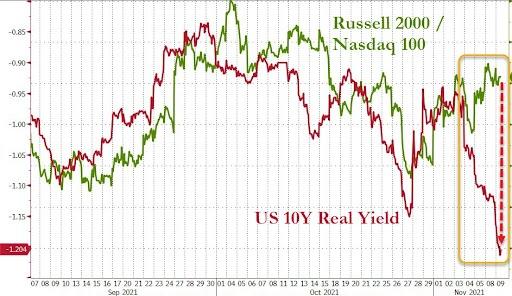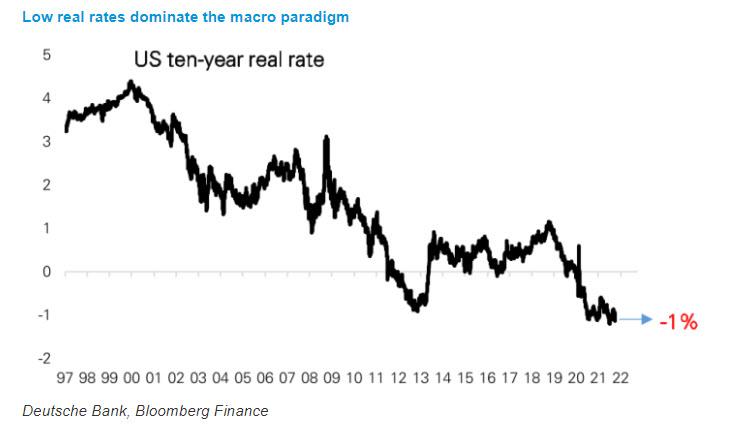"The Most Important Question For The Market Is Identifying The Driver Behind Record Low Negative Real Rates"
For all the focus on inflation, such as today's red hot PPI print which saw producer prices soar at a record pace crushing profit margins, DB's FX strategist George Saravelos writes that "it would be impossible to understand market dynamics this year without highlighting one simple chart: the US ten-year real rate, stuck at record all-time lows."

Indeed, when looking at real rates - unlike the relentless surge in breakevens - it is as if nothing has happened this year and goes a long way to explain incredibly benign global financial conditions despite multiple macro and market shocks, most recently a massive re-pricing of global front ends.

What is the cause? Here Saravelos doesn't agree with the argument that it's central bank dovishness as almost all central banks in EM and DM have surprised hawkishly this year and if the market was so dependent on QE flows, the reaction to faster tapering programs should have been bigger.
It must - the strategist suggests - then follow, that something else is going on.
Here, Saravelos reminds his readers that over the last few months he has emphasized the role of global excess saving and a low terminal rate in driving market dynamics, evidenced in multiple indicators: huge bank buying of treasuries recycling consumer deposits, consumer confidence indicators pointing to high precautionary saving and late-cycle behavior, a smaller than expected widening of the US trade deficit pointing to Ricardian offsets to the fiscal stimulus, curve inversions in EM and the UK, and an evolving supply shock that is negative for growth and pushes down terminal rates.
It follows from the above that last week's Fed meeting "is unlikely to matter much" and indeed, real 10Y yields have only continued to slide despite the Fed's formal announcement of a taper.
- First, because the tapering timeline has been incredibly well flagged so there would need to be a huge change for it to surprise.
- Second, because the market is already pricing a high chance of Fed hikes before tapering even concludes and financial conditions have proven impervious to front-end repricing anyway.
Rather than the Fed (and indeed the outlook for inflation), the DB strategist argues that the most important question for the market is identifying the driver behind incredibly low negative real rates.
If the answer is "too much" savings and liquidity, it implies front-ends will have to go much more to tighten financial conditions.
On the other hand, if it is a very low terminal rate and r*, it implies the tipping point towards slowing growth is closer than assumed, in other words the Fed is tapering - and tightening - into a recession as we wrote in June.
Over the course of the year, DB has attributed market dynamics to both factors; but as 2022 comes in to view, Saravelos writes that "more precisely assessing the relative importance of the two is going to be critical for the market outlook."
Disclaimer: Copyright ©2009-2021 ZeroHedge.com/ABC Media, LTD; All Rights Reserved. Zero Hedge is intended for Mature Audiences. Familiarize yourself with our legal and use policies every ...
more


